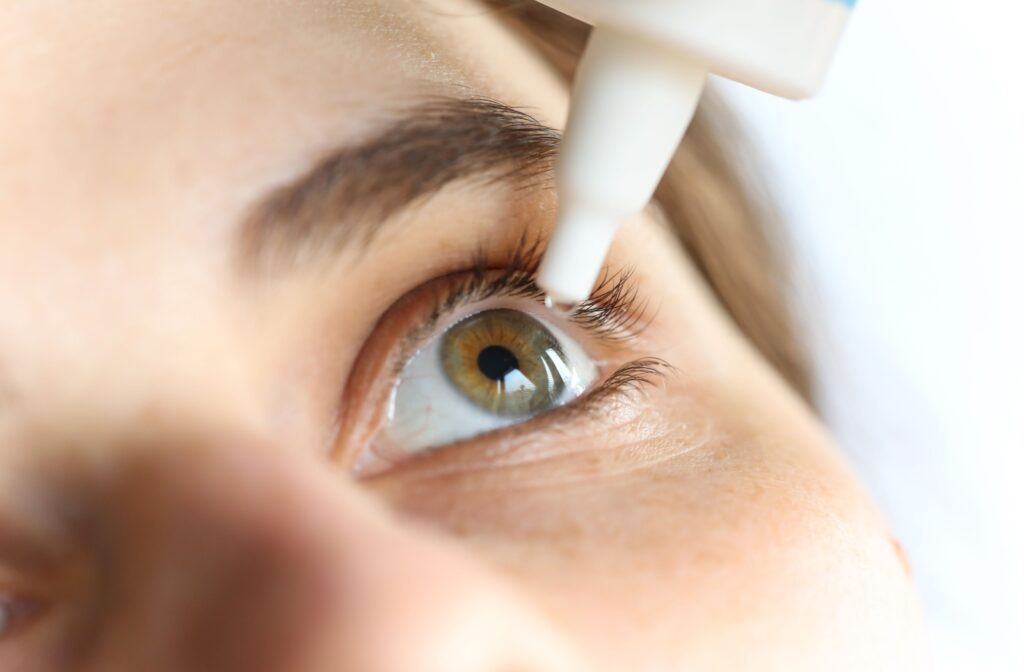Glaucoma is one of those conditions that sometimes goes unnoticed in the early stages. While it doesn’t always make its presence obvious at first, untreated glaucoma can lead to permanent damage.
One common early sign of glaucoma is a subtle loss of peripheral vision, which develops gradually and can go unnoticed for some time. Early detection and treatment are needed to help preserve your vision. Let’s explore the first sign of glaucoma, the different types of the condition, and how you can manage it.
What Is Glaucoma?
Glaucoma is not just a single eye condition. It actually refers to a group of eye disorders that cause damage to the optic nerve, which is responsible for transmitting visual information from your eyes to your brain. This damage is typically caused by increased intraocular pressure (IOP), which occurs when the balance of fluid inside the eye is disrupted. When the pressure inside the eye becomes too high, it can harm the optic nerve and result in permanent vision loss.
The First Sign of Glaucoma: Subtle Loss of Peripheral Vision
The initial signs of glaucoma can be extremely subtle and might not be noticeable at first. One of the earliest signs is a gradual loss of peripheral vision, often affecting the outer edges of your visual field. Since this happens so slowly, many people don’t realize they are losing their peripheral vision until it’s already quite severe. Because of this, glaucoma is often referred to as the “silent thief of sight.”
Since it’s easy to miss these early warning signs, regular eye exams are necessary for catching glaucoma early. Scheduling annual eye exams is key, especially if you are at higher risk for developing this condition.
Types of Glaucoma
There are several types of glaucoma, each with its own causes, symptoms, and treatments. Let’s take a closer look at some common forms:
1. Open-Angle Glaucoma
This is a common form of glaucoma. Open-angle glaucoma typically develops gradually and often without noticeable symptoms. The drainage canals in the eye become clogged over time, slowing down the flow of fluid and increasing intraocular pressure.
As the pressure builds, it can damage the optic nerve, leading to vision loss, particularly in the peripheral field. Since this type of glaucoma doesn’t cause immediate discomfort or noticeable changes in vision, regular eye exams are vital to detect it early.
2. Secondary Glaucoma
Secondary glaucoma develops as a result of another health issue, such as an eye injury, inflammation, diabetes, or steroid use. Other causes can include pigment dispersion syndrome and pseudoexfoliation syndrome. In pigment dispersion syndrome, pigment granules from the iris break free and clog the eye’s drainage system, leading to increased pressure.
Pseudoexfoliation syndrome occurs when flakes of protein accumulate on the eye’s lens, which can also block the drainage system and raise eye pressure. When the eye’s ability to drain fluid is impaired due to these underlying conditions, the pressure inside the eye can increase, leading to glaucoma. Treatment involves addressing the underlying condition and managing the eye pressure.
3. Normal-Tension Glaucoma
Normal-tension glaucoma is a bit different from other types because it occurs despite normal eye pressure. In this case, the optic nerve becomes damaged even when the pressure inside the eye remains within the normal range. The cause of this is not fully understood but may involve reduced blood flow to the optic nerve or structural problems within the eye.
4. Angle-Closure Glaucoma
Angle-closure glaucoma is a rare but serious condition that requires immediate medical attention. It occurs when the angle between the iris and cornea becomes too narrow, blocking the drainage canals and causing a rapid increase in eye pressure. Symptoms of angle-closure glaucoma include severe eye pain, sudden vision loss, halos around lights, redness in the eye, and nausea or vomiting. If you experience these symptoms, seek emergency care right away.
5. Congenital Glaucoma
Congenital glaucoma is a rare condition that is present at birth. It occurs when the drainage system in the eye doesn’t develop properly. Early signs of congenital glaucoma in infants and young children include cloudy or enlarged corneas, excessive tearing, light sensitivity, and eye irritation. If you notice these signs in a child, seek professional care quickly.

How Glaucoma Is Treated
While there is no cure for glaucoma, the condition can be managed to prevent further damage and preserve vision. The primary goal of treatment is to lower intraocular pressure and protect the optic nerve. Treatment options depend on the type and severity of glaucoma, and may include:
- Prescription eye drops: These help lower eye pressure by improving fluid drainage or reducing fluid production inside the eye.
- Oral medications: These are sometimes prescribed when eye drops alone are not sufficient to control pressure.
- Laser treatment: Laser procedures can improve the drainage of fluid from the eye, lowering intraocular pressure.
- Surgery: In some cases, surgical procedures like trabeculectomy are used to create a new drainage path for the eye’s fluid.
Your optometrist will work closely with you to determine the treatment plan based on your specific needs.
The Importance of Regular Eye Exams
Since glaucoma develops slowly and often without noticeable symptoms in its early stages, regular eye exams play a key role in early detection and treatment. During a comprehensive eye exam, your optometrist will measure your eye pressure, examine the optic nerve, and check for other signs of glaucoma. Early detection increases the chances of preserving vision and slowing progression.
If you’re due for an eye exam or have concerns about your eye health, the team at Vision One Boise is here to help. Contact us today to schedule your appointment!



